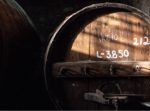Quinta da Gaivosa / Alves de Sousa
One of the most exciting Douro winery that is synonymous with respect for tradition but also inovation
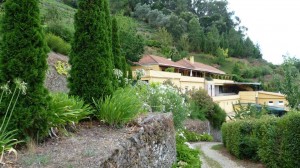 Quinta da Gaivosa is a family-owned property for five generations. It is one of six properties of the De Sousa family.
Quinta da Gaivosa is a family-owned property for five generations. It is one of six properties of the De Sousa family.
As most of the properties of the Douro the Quinta da Gaivosa traditionally produces grapes for large Porto Wine company. In the late 80s, due to problems of increasing costs and a particularly disastrous year 1988 for Porto wines, Domingos da Silva explores the potential production of dry wines in the vineyard. The first tests are conclusive so he decides to replicate the experience each year with the aim of select parcels and varieties that will give the best wines. In 1992, after four years of research and development it officially launches its first dry wine in Douro DOC (appellation). It was a dry white wine: Quinta do Vale da Raposa 1991.
 Today the De Sousa family, through buyouts and weddings, has five properties in the Douro Valley (Quinta da Aveleira, Quinta das Caldas, Quinta da Estaçao, Quinta da Gaivosa, Quinta do Vale da Raposa) and annually produces still wines, sparkling and Porto wines. “The Quinta da Gaivosa entered the De Sousa family with a passionate love story, between my grandfather and my grandmother.” (Tiago Alves de Sousa)
Today the De Sousa family, through buyouts and weddings, has five properties in the Douro Valley (Quinta da Aveleira, Quinta das Caldas, Quinta da Estaçao, Quinta da Gaivosa, Quinta do Vale da Raposa) and annually produces still wines, sparkling and Porto wines. “The Quinta da Gaivosa entered the De Sousa family with a passionate love story, between my grandfather and my grandmother.” (Tiago Alves de Sousa)
Each year a larger and larger part of their production is vinified by him. The other part of the production is sell to a few large Port wines company.
What kind of agriculture do you practice?
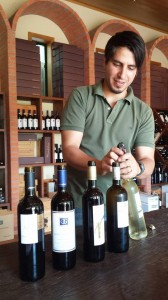 “I produce in reasoned and integrated agriculture but with some practice borrowed from organic agriculture. We are not certified because we don’t want to be related to a marketing trick. The wine have to be sold because it is good and not just because it is organic.” (Tiago Alves de Sousa)
“I produce in reasoned and integrated agriculture but with some practice borrowed from organic agriculture. We are not certified because we don’t want to be related to a marketing trick. The wine have to be sold because it is good and not just because it is organic.” (Tiago Alves de Sousa)
What do you look for each year by creating your wines?
“The expression of the vineyard but still in the way we see it. It is not a style but most of the time they feel more an expression of our vineyards, our grapes and our land than anything else. We want that through our range we see the expression of the diversity of our different quinta and vineyards.
Our winemaking change depending on the vintage and terroir.” (Tiago Alves de Sousa)
What makes the character of your wine?
“50 grapes spread over 100 plots are complicated to manage, but at the same time it’s a chance at winemaking. We only grow local grapes because: Why having the same grapes that the rest of the wolrd produces?
It has an average of four weeks difference in maturity. Here, where we are in the Douro Valley we are lucky to be protected from moisture by mountains. Here we don’t have just effects of altitude but also effects of our distance from the Douro estuary so it allows us to have a little more variation in temperature.
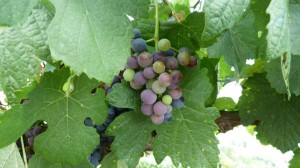 Here, for Gaivosa wines we always look for freshness and balance. We are also specializes in dry white Porto wines.
Here, for Gaivosa wines we always look for freshness and balance. We are also specializes in dry white Porto wines.
For me, the personality of the wine is the most important thing. Our vineyard keeps lots of vegetation for the balance of the ecosystem. On the property there was a lot of eucalyptus and pine and what is interesting is that we find these flavors in the wine. The wine is not just soil, vine and man but an entire ecosystem.
At Gaivosa we have the three types of terraces: the Patamares, the Vinha Ao Alto and walled terraces. “(Tiago Alves de Sousa)
The Traditional walled terraces are made of stone terraces with 1 or 2 rows of vines. Each of these decks is supported by stone walls. This is the oldest method of planting the Douro.
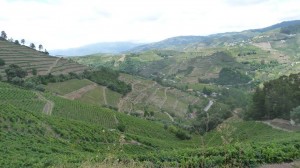 « Patamares » are a kind of terraces. They are more modern, less expensive and faster to build. This technique was used extensively in the years 1980/1990. Only with this type of terraces one gets a lower planting density and it changes the soil hydrology. “One of the bigger problem with this development is the erosion because with this system there is more protection for drainage so it compensates by allowing vegetation to limit erosion. We try to as the restructuring of the vineyard to abandon this type of plantation to return to plantation by terraces as well as Vinha Ao Alto but it is increasingly difficult to find craftsmen capable of building walled terraces.” (Tiago Alves de Sousa)
« Patamares » are a kind of terraces. They are more modern, less expensive and faster to build. This technique was used extensively in the years 1980/1990. Only with this type of terraces one gets a lower planting density and it changes the soil hydrology. “One of the bigger problem with this development is the erosion because with this system there is more protection for drainage so it compensates by allowing vegetation to limit erosion. We try to as the restructuring of the vineyard to abandon this type of plantation to return to plantation by terraces as well as Vinha Ao Alto but it is increasingly difficult to find craftsmen capable of building walled terraces.” (Tiago Alves de Sousa)
« Vinha Ao Alto » are terraces with vines planted vertically, rows slope. These plots have the advantage of preserving the natural hydrology of the soil. Other benefits they can increase plant density and leaf area.
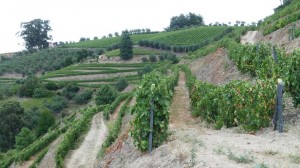 If you had to choose three words to describe your passion and the Quinta da Gaivosa which ones would you choose?
If you had to choose three words to describe your passion and the Quinta da Gaivosa which ones would you choose?
“The world of the vine and wine are not easy. I would say: expression of soil, climate and the terroir. Terroir is not just a poetic phrase, it is a reality.
If I can add a few words I would say that what is exciting and unique in this region is the duality between the oldest fortified wine appellation in the world (Porto) and the youth still wines appellation of the Douro Valley.” (Tiago Alves de Sousa)
Do you have any future plans for Quinta da Gaivosa / Alves de Sousa ?
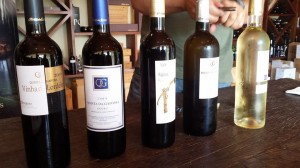 “Yes. To more or less in 10 years I would like to vinify the entire grape production of the property and therefore not to sell part of our production to Porto wines company. It would allow us to reach about 500,000 bottles produced per year.” (Tiago Alves de Sousa)
“Yes. To more or less in 10 years I would like to vinify the entire grape production of the property and therefore not to sell part of our production to Porto wines company. It would allow us to reach about 500,000 bottles produced per year.” (Tiago Alves de Sousa)
Thanks to Tiago Alves de Sousa for his hospitality.
Jonathan Choukroun Chicheportiche

